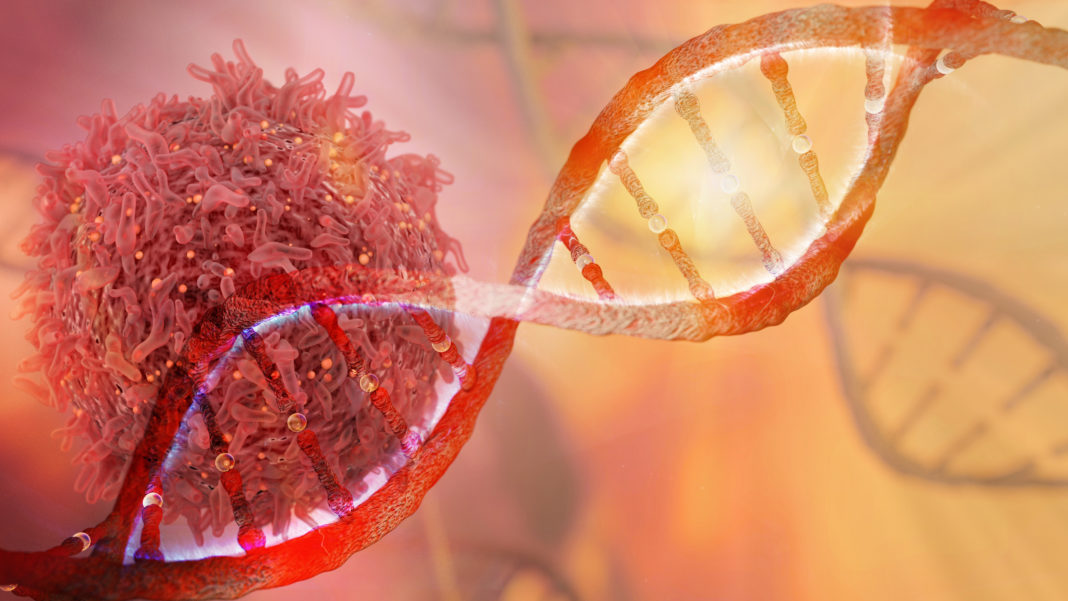Repost: Link
Coming soon, discussion on the implications of 4 stranded DNA. Eve is mentioned four times by name in Holy Scripture.
The human genome is usually formed as a double helix, but DNA can assume other configurations such as the four-stranded structure. Four-stranded DNA structures are known as G-quadruplexes (G4) and often found near DNA regions that turn gene activity on or off. G4 have been previously found in HIV, HPV, and has also been associated with cancer-driving genes; making it a potential target for antiviral drugs and cancer preparations. Now for the first time, scientists from the University of Cambridge have discovered where G4 form in preserved tumor tissues and biopsies of breast cancer.
Their study, “Landscape of G-quadruplex DNA structural regions in breast cancer,” is published in Nature Genetics and led by Shankar Balasubramanian, PhD, professor of medicinal chemistry at the University of Cambridge, senior group leader at the Cancer Research U.K. Cambridge Institute, and fellow of Trinity College, Cambridge.
G4 form in regions of DNA that are rich in one of its building blocks, guanine (G), when a single strand of the double-stranded DNA loops out and doubles back on itself, forming a four-stranded “handle” in the genome.
In 2013, 60 years after the discovery of the DNA double-helix structure, Cambridge researchers, including Balasubramanian, published a paper proving that G-quadruplexes also existed within the human genome. Balasubramanian and colleagues developed sequencing technologies and approaches capable of detecting G-quadruplexes in DNA and in chromatin; they showed that G-quadruplexes play a role in transcription, and they identified the four-stranded structures in cancer cells with the help of an antibody that attaches exclusively to G-quadruplexes. To stop them from unraveling into the ordinary DNA, they exposed the cells to pyridostatin, a molecule that traps quadruple helices wherever they form.
For their current discovery, the team used their quantitative sequencing technology to study G-quadruplex DNA structures in 22 model tumors. The models had been made by taking biopsies from patients at Addenbrooke’s Hospital, Cambridge University Hospital NHS Foundation Trust, then transplanting and growing the tumors in mice.
“Response and resistance to anticancer therapies vary due to intertumor and intratumor heterogeneity1. Here, we map differentially enriched G-quadruplex (G4) DNA structure-forming regions (∆G4Rs) in 22 breast cancer patient-derived tumor xenograft (PDTX) models,” noted the researchers.
“We’re all familiar with the idea of DNA’s two-stranded, double helix structure, but over the past decade it’s become increasingly clear that DNA can also exist in four-stranded structures and that these play an important role in human biology. They are found in particularly high levels in cells that are rapidly dividing, such as cancer cells. This study is the first time that we’ve found them in breast cancer cells,” explained Balasubramanian.
“The abundance and location of G-quadruplexes in these biopsies gives us a clue to their importance in cancer biology and to the heterogeneity of these breast cancers,” added Robert Hänsel-Hertsch, PhD, who is now at the Center for Molecular Medicine Cologne, University of Cologne, and first author of the study.
The discovery highlights a potential target that scientists may use against breast cancer. There are at least 11 subtypes of breast cancer, and the team discovered that each has a different pattern of G4 that is unique to the transcriptional program driving that particular subtype.
“While we often think of breast cancer as one disease, there are actually at least 11 known subtypes, each of which may respond in different ways to different drugs,” added Carlos Caldas, MD, professor of cancer medicine and director of the Cambridge Breast Cancer Research.
“∆G4Rs in most PDTXs (14 of 22) were found to associate with more than one breast cancer subtype, which we also call an integrative cluster (IC). This suggests the frequent coexistence of multiple breast cancer states within a PDTX model, the majority of which display aggressive triple-negative IC10 gene activity. Short-term cultures of PDTX models with increased ∆G4R levels are more sensitive to small molecules targeting G4 DNA. Thus, G4 landscapes reveal additional IC-related intratumor heterogeneity in PDTX biopsies, improving breast cancer stratification and potentially identifying new treatment strategies,” noted the researchers.
The team of researchers has identified two synthetic molecules, pyridostatin and CX-5461, that can target the G-quadruplexes, and may make it possible to prevent cells from replicating their DNA and block cell division, which would halt the runaway cell proliferation at the root of cancer.
Their discovery provides a new potential target and may lead to future studies of breast cancer and the role G-quadruplexes play in other diseases.
